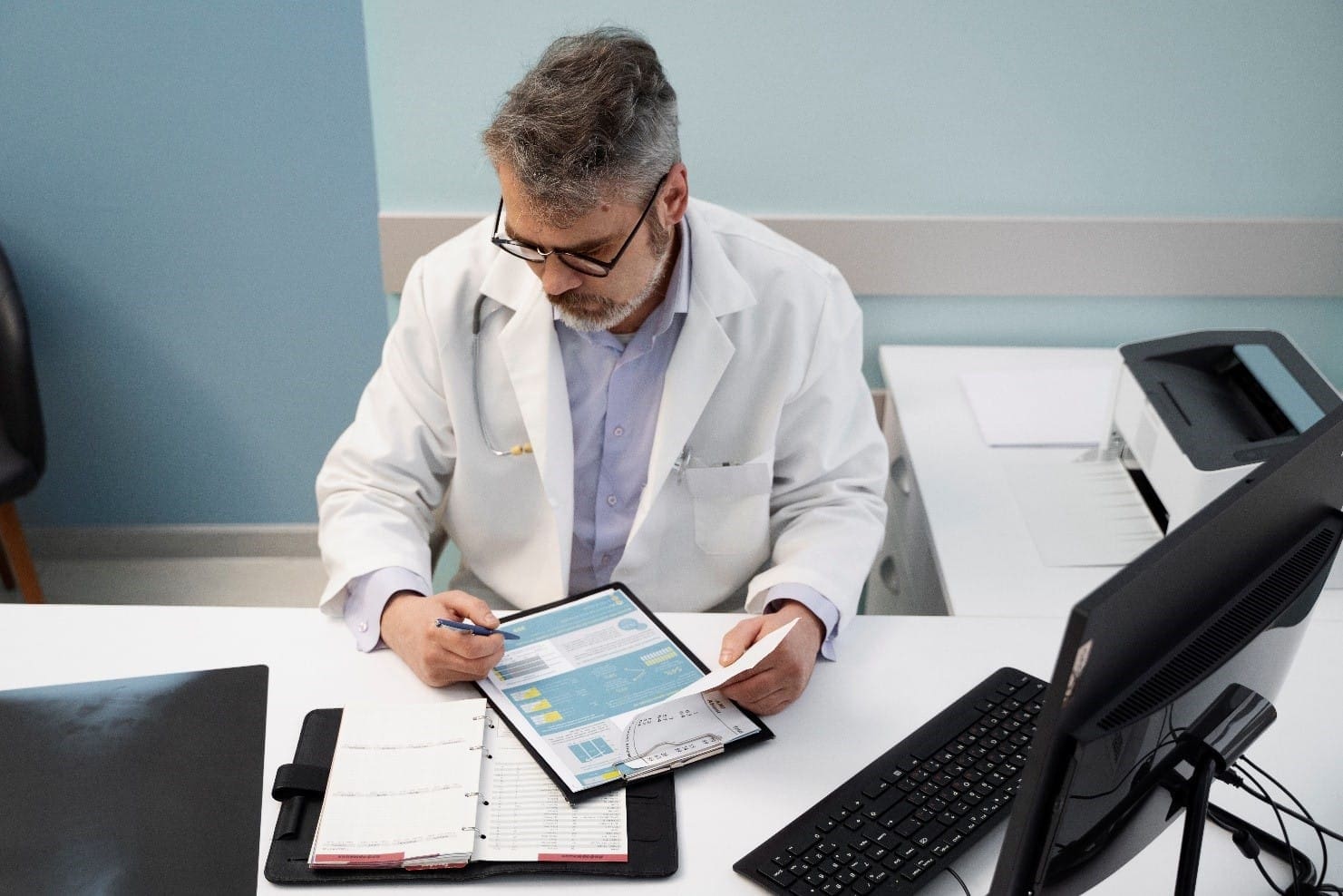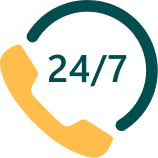On-Demand Outsourcing BPO Services for Healthcare Providers With 24/7 Coverage!
Save up to 70% on staffing costs!
Browse Specialty Staffing ServicesHow Medical Scribing Reduces Documentation Errors in Hospitals?

As a healthcare provider, you know just how much rides on getting the details right in patient documentation. Whether you’re a doctor, nurse, or administrator, every piece of information you record carries significant weight. An error in a patient’s chart can lead to unnecessary tests, incorrect treatments, or even serious health risks. And yet, in today’s fast-paced healthcare environment, where you’re expected to see more patients, respond to endless emails, and stay on top of mountains of paperwork, documentation errors are more common than anyone would like.
Enter medical scribes—these are trained professionals who work alongside you to capture patient information accurately in real time. Scribes aren’t just “note-takers.” They’re an extra set of ears and hands, making sure every detail from your patient encounter goes down on paper (or rather, into the EHR) exactly as it should. This support means you can stay fully engaged with your patients, without having to pause every few minutes to enter data into a computer. In this case study, we’re going to dive into how medical scribing actually reduces documentation errors in hospitals, improves patient safety, and helps you focus more on the thing you do best—caring for patients.
Key Takeaways
- Medical scribes reduce documentation errors by capturing information accurately, right as it’s happening, so nothing gets lost or misinterpreted.
- Scribes free up providers to focus on patient care, which leads to better communication and a more relaxed environment during patient interactions.
- Accurate documentation enhances patient safety, reducing the risk of mistakes that come from mis recorded or missing information.
- Scribes help ease provider burnout, allowing doctors and nurses to spend less time on charts and more time on the human side of their work.
The Real Impact of Medical Scribes in Reducing Documentation Errors
Capturing Information in Real Time: A Game-Changer for Accuracy
Imagine you’re in the middle of a busy shift, assessing a patient who’s just come in with multiple symptoms and a complicated history. You’re listening closely to catch every detail they’re sharing, but at the same time, you know you’ll need to document all this in their record, down to the last symptom and medication. If you’re managing documentation alone, there’s always a chance something slips through the cracks.
Now, imagine having a medical scribe right by your side. The scribe is listening carefully, taking notes in real time, and entering every detail into the EHR as the patient talks. You can focus entirely on assessing and engaging with the patient without worrying about typing or remembering details later. Real-time scribing minimizes the chance of errors due to memory lapses or distractions because the information is documented as it happens. This immediate, accurate capture of patient data is one of the biggest reasons scribing can significantly reduce documentation errors.
Reducing the Mental Load on Providers
There’s no denying it—EHRs are complex, and managing them can be mentally draining. Documenting patient encounters accurately requires not just medical knowledge, but also a lot of attention to detail and an ability to navigate digital systems quickly. When you’re juggling multiple tasks, from listening to a patient’s concerns to entering data in specific EHR fields, it’s easy to get overwhelmed, and that’s when mistakes can creep in.
Medical scribes take on this burden, handling the technical side of documentation so you can focus entirely on the patient. By reducing your cognitive load, they allow you to give your full attention to what truly matters: connecting with your patients, listening to their concerns, and making accurate diagnoses. Less mental juggling means fewer mistakes, plain and simple.
Imagine an outpatient setting where you’re seeing patient after patient with barely any time to breathe between visits. With a scribe handling the documentation, you’re less likely to feel rushed and fatigued, which naturally reduces the chance of making errors.
Improving Accuracy in Medication and Treatment Orders
Medication errors are among the most serious types of documentation errors. Something as simple as mistyping a dosage or medication name can lead to serious consequences for a patient. Scribes help by ensuring that everything you prescribe or recommend is documented correctly.
Picture this: You’re prescribing a medication for a patient with a complex case. You say the dosage aloud to the scribe, who immediately notes it down and double-checks it with you before finalizing it in the record. By having a dedicated person document and verify your instructions, the likelihood of an error—like a dosage typo or the wrong medication name—is drastically reduced. Scribes make sure your treatment plan is recorded precisely as you intended, giving you and your patients peace of mind.
Helping with Accurate Coding for Billing and Compliance
Accurate documentation isn’t just about patient safety; it also has huge implications for billing and coding. If documentation is missing or incorrect, the wrong codes might be assigned, which can lead to rejected claims or issues with insurance reimbursement. Medical scribes understand this aspect of the job as well. While they aren’t responsible for coding itself, they make sure that all relevant details are there, so coders can do their work accurately and efficiently.
For example, in an emergency room, a scribe makes sure that all procedures, diagnoses, and patient complaints are recorded in detail. This thorough documentation allows the coding team to accurately reflect the services provided in the patient’s bill. With a scribe, you’re less likely to run into issues where claims are denied because of incomplete or incorrect documentation, saving both you and your patients from potential billing headaches.
Step-by-Step Process of How Medical Scribing Works
- Training – Medical scribes are trained in medical terminology, EHR navigation, and patient confidentiality (HIPAA). They shadow providers initially to understand the specifics of different medical settings, whether that’s a busy ER, an outpatient clinic, or a specialized practice.
- Real-Time Documentation – During patient encounters, scribes document everything in real time. They enter details directly into the EHR, recording symptoms, provider observations, treatments, and instructions as they are discussed.
- Review and Verification – After each encounter, scribes may quickly review the notes with the provider to ensure accuracy. This double-check step helps catch any minor errors or miscommunications before they become part of the permanent record.
- EHR Entry and Support for Billing – Scribes enter the details into the EHR with an understanding of what coders will need. They focus on clear, detailed notes that provide a full picture of the patient encounter, which supports accurate coding and billing.
What Did We Learn?
Medical scribes are making a real difference in hospital and clinic settings, particularly when it comes to reducing documentation errors. By capturing patient information in real-time, they ensure that records are thorough, accurate, and easy to follow. For providers, this means less time spent on paperwork, less mental exhaustion from multitasking, and more opportunities to connect directly with patients.
Accurate documentation is essential not just for safe patient care, but also for seamless billing and coding. Scribes play a key role here, making sure that all necessary information is available for the coding and billing teams. Ultimately, medical scribes help healthcare providers do what they’re trained to do: provide high-quality, compassionate care without the constant worry of keeping up with documentation.
FAQs
Can medical scribes replace the need for coders?
No, scribes and coders play different roles. Scribes document details in real time, making sure the patient’s story is complete and accurate. Coders, on the other hand, assign specific billing codes based on this documentation. Scribes support accurate coding by ensuring detailed notes, but they don’t assign the codes themselves.
Are scribes only helpful in emergency departments?
Not at all. While scribes are commonly used in fast-paced settings like the ER, they’re also valuable in outpatient clinics, primary care offices, and even telemedicine. Any setting where accurate documentation is important can benefit from having a scribe.
Do scribes get HIPAA training?
Yes, absolutely. Medical scribes receive extensive training on HIPAA regulations and patient privacy. They’re held to the same confidentiality standards as other healthcare staff, ensuring patient information remains secure.
Can scribes introduce errors into records?
While no system is perfect, trained scribes are highly skilled in accurate documentation. Providers typically review notes with the scribe immediately after each encounter, which helps catch and correct any minor issues on the spot.
Does having a scribe slow down patient encounters?
Quite the opposite. Scribes often make patient encounters more efficient because they handle the documentation while the provider focuses on the patient. This can actually save time overall, allowing providers to move through their day with less stress and more focus on patient care.
Disclaimer
The information in our posts is meant to inform and educate both healthcare providers and readers seeking a better understanding of the prior authorization process. However, it is not a substitute for professional advice. Insurance requirements, policies, and approval processes can vary widely and change over time. For accurate guidance, healthcare providers should consult directly with insurers or use professional resources, while patients should reach out to their insurance providers or healthcare professionals for advice specific to their situation.
This content does not establish any patient-caregiver or client-service relationship. Staffingly, Inc. assumes no liability for actions taken based on information provided in these posts.
For tailored support and professional services,
please contact Staffingly, Inc. at (800) 489-5877
Email : support@staffingly.com
 Book a Demo to Build Your Team Today!
Book a Demo to Build Your Team Today!
 Read Case Studies
Read Case Studies 



 Virtual Medical Assistants
Virtual Medical Assistants



